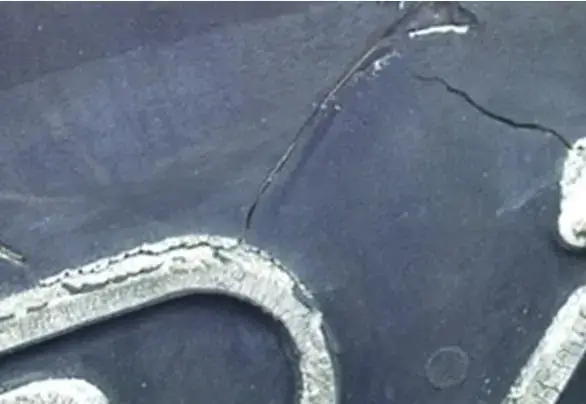What is Tire Dry Rot?
What causes tire dry rot?
The term dry rot relating to tires is really a misnomer because tires don’t rot like lumber. Tires do dry out, but the cracks in the rubber can also be caused by other factors beyond just drying out. The tire industry doesn’t use the term “dry rot,” instead they call it “Weathering.”
Tire dry rot is caused by 6 things
1. Age. The useful life of a tire is 10 years from the date of manufacture. Tires older than 10 years will start to develop cracks from drying out.
2. Excessive exposure to ultraviolet (UV) rays from sunlight
3. Driving with underinflated tires
4. Storing tires at extremely high temperatures
5. Not using the tires for long periods
6. Storing tires near electric motors, battery chargers, generators, welding equipment, or other ozone-generating sources
Driving with underinflated tires causes heat buildup and tire cracking, commonly called dry rot
Driving on an underinflated tires causes the tire shoulder and sidewall to flex too much and build up excessive heat which degrades the rubber. The degraded rubber cracks
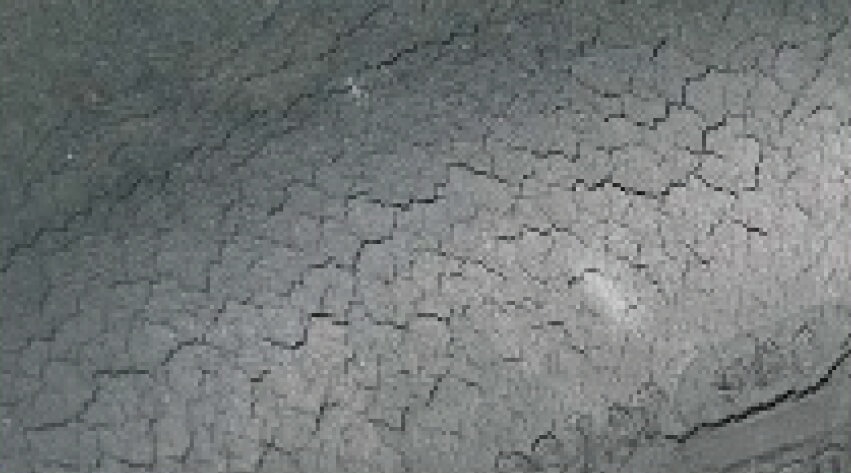
Cracks from underinflation
Hot storage conditions also cause tires to dry rot
Tires are made with a combination of rubber, UV inhibitors, oils, polymers, carbon black and conditioners. As you use tires, centrifugal force moves those conditioners out to the surface of the tire to protect the rubber from degrading. Parking your vehicle for long periods, especially in sunlight greatly accelerates the rubber decomposition.
Chemicals can cause tire dry rot
The application of tire dressing treatments can also accelerate rubber degradation. Avoid using any tire shine or tire dressing products that contain petroleum distillates or silicone. A motor oil leak can also cause rubber degradation. If you get oil or grease on your tires, remove it immediately.
What does tire dry rot look like?
Tire dry rot is most noticeable on the sidewall, 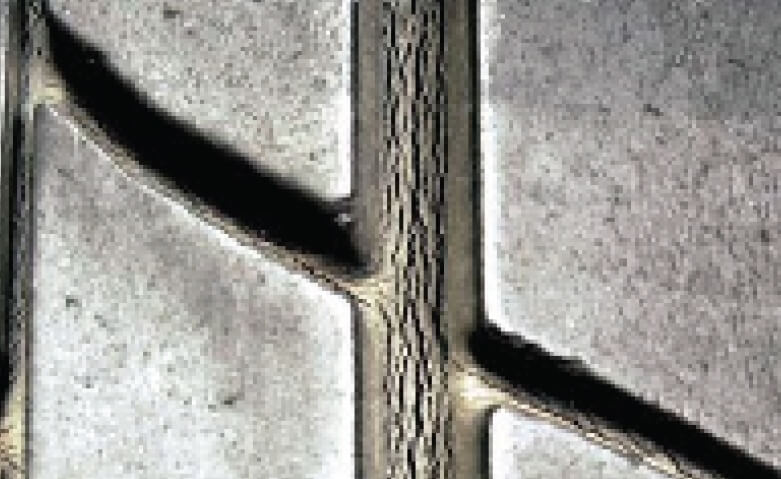 in-between tread block, and on the tread block itself. In advanced tire rot, the rubber starts to separate from the carcass. This can cause tire wobble at low speeds, something you can feel in the steering wheel. Dry rot usually appears all around the tire, not just in certain spots.
in-between tread block, and on the tread block itself. In advanced tire rot, the rubber starts to separate from the carcass. This can cause tire wobble at low speeds, something you can feel in the steering wheel. Dry rot usually appears all around the tire, not just in certain spots.
If you touch a dry rotted tire, you’ll notice that the rubber is hard and brittle. The rubber appears more grey than black.
Dry rot can also appear as brittleness
Breakable Appearance: The rubber may feel harder in some spots near the crack and may actually flake off.
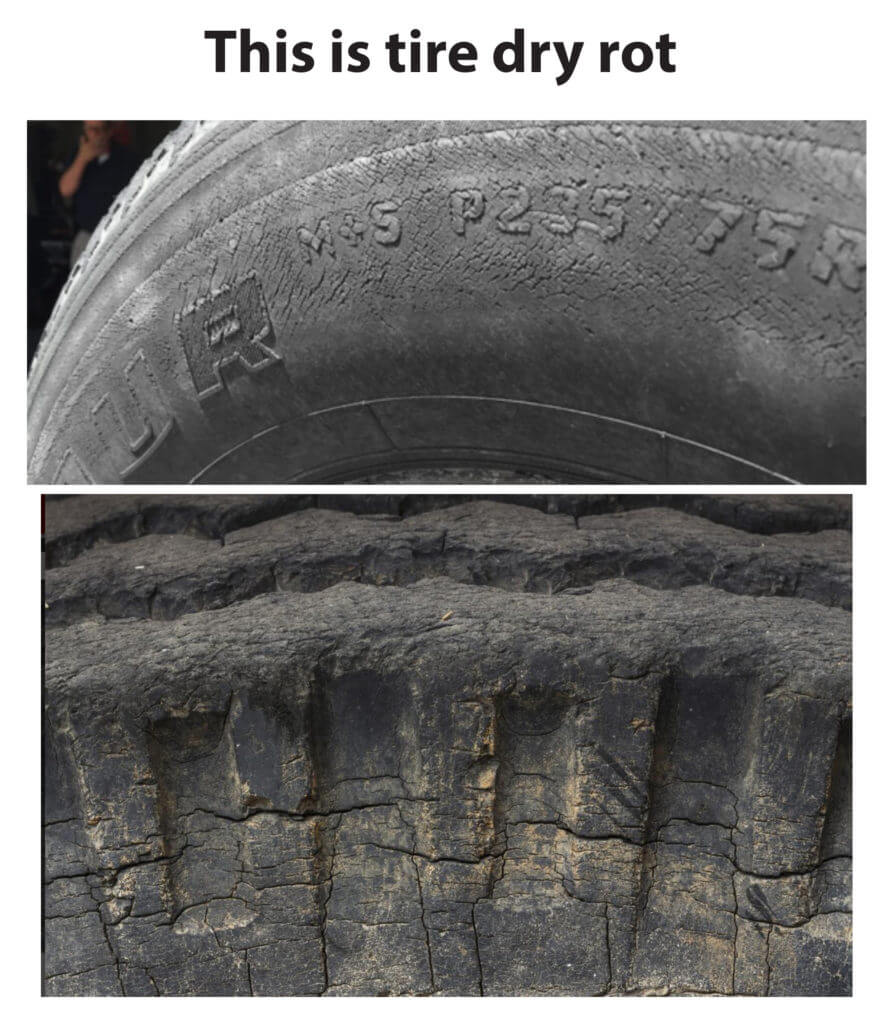
Tire dry rot
How to prevent tire dry rot
Avoid chemical contact. Don’t use industrial cleaning chemicals, tire dressing, abrasive cleaners, or corrosive chemicals on your tires.
Don’t use dishwashing detergent to wash your car. Use car wash soap. It’s less likely to pull resins out of your paint and less likely to dry out your tires.
Limit direct sunlight exposure. If you’re storing your vehicle for long periods, protect your tires with tire covers.
Avoid long period of disuse. In other words, use ‘em or lose ‘em.
Avoid storing tires near ozone generating equipment like electric motors.
What’s the difference between dry rot and damage caused by underinflation?
This comes up quite a lot. Drivers see cracks in their tires an immediately suspect tire dry rot. They submit photos to online forums and everyone says, “Oh yeah, that’s dry rot. Take them back to the tire store and get them replaced under warranty.” I’ve got news for you; cracks on the tire shoulders and sidewall near the shoulders are most often caused by underinflation, NOT tire dry rot.
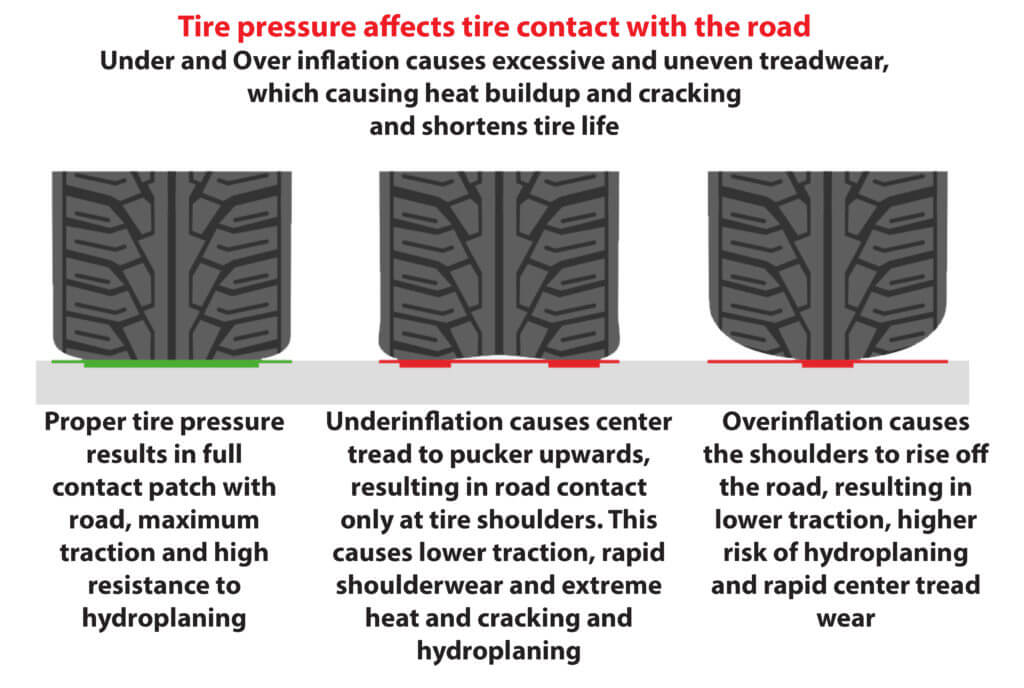
Tire pressure and tread wear
How does underinflation cause tire cracking.
When you drive on underinflated tires, the bulk of the vehicle’s weight is riding on the shoulders of the tires. This causes excessive tread wear and excessive heat building due to the additional flexing. It’s the heat buildup that accelerates rubber degradation and YOU caused it by not checking your tire inflation.
How to spot tire cracking caused by underinflation
What’s the difference between dry rot cracks and cracking caused by underinflation? Simple. First, underinflation causes rapid tread wear on the shoulders. So the center tread will be deeper than the tread depth near the shoulders. Underinflation also wears off the sipes on the shoulder tread faster than the center tread.
If you notice shoulder tread wear, along with cracks but the center tread is in better condition, you’re got underinflation damage, not tire dry rot. Don’t expect any tire manufacturer to cover your tires under warranty.
Underinflation damage can also show up as deep circular cracks on the sidewall. These large deep cracks are caused by excessive sidewall flexing due to underinflation, not dry rot.
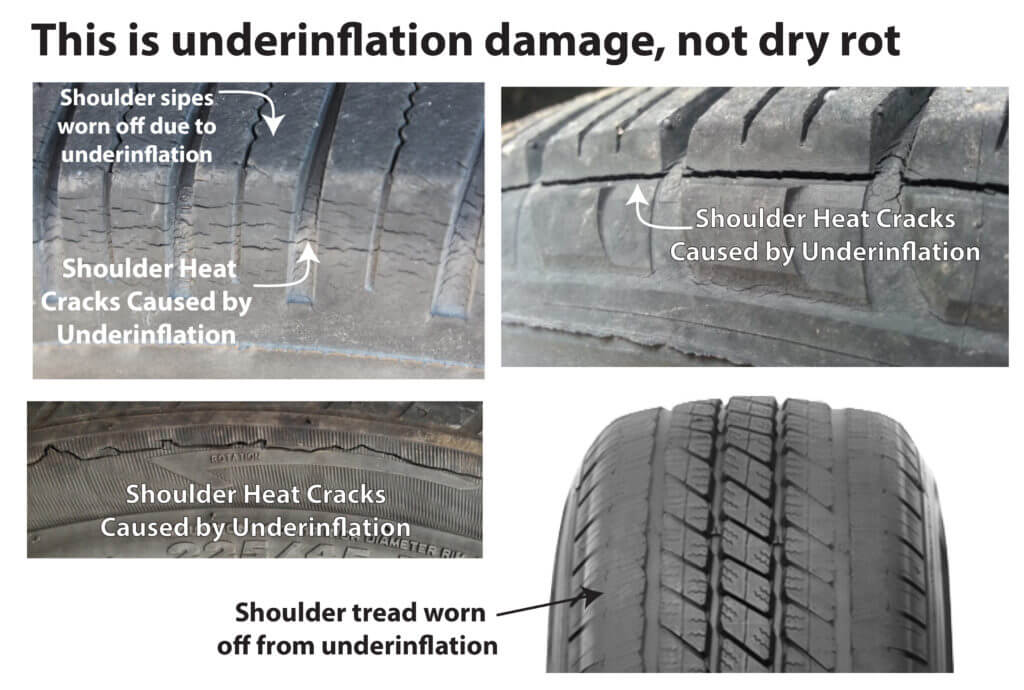
This is underinflation, not dry rot
That’s why tire inflation pressure is so important!
©, Rick Muscoplat
Posted on by Rick Muscoplat
